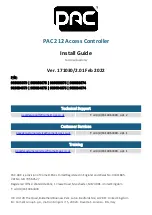
Basic Operation
1531
SPNU563A – March 2018
Copyright © 2018, Texas Instruments Incorporated
Multi-Buffered Serial Peripheral Interface Module (MibSPI) with Parallel Pin
Option (MibSPIP)
28.2.10 Test Features
28.2.10.1 Internal Loop-Back Test Mode (Master Only)
The internal loop-back self-test mode can be utilized to test the SPI transmit and receive paths, including
the shift registers, the SPI buffer registers, and the parity generator. In this mode the transmit signal is
internally feedback to the receiver, whereas the SIMO, SOMI, and CLK pin are disconnected; that is, the
transmitted data is internally transferred to the corresponding receive buffer while external signals remain
unchanged.
This mode allows the CPU to write into the transmit buffer, and check that the receive buffer contains the
correct transmit data. If an error occurs the corresponding error is set within the status field.
NOTE:
This mode cannot be changed during transmission.
28.2.10.2 Input/Output Loopback Test Mode
Input/Output Loopback Test mode supports the testing of all Input/Output pins without the aid of an
external interface. Loopback can be configured as either analog-loopback (loopback through the pin-level
input/output buffers) or digital loopback (internal to the SPI module). With Input/Output Loopback, all
functional features of the SPI can be tested. Transmit data is fed back through the receive-data line(s).
See
for a diagram of the types of feedback available. The IOLPBKTSTCR register defines all
of the available control fields.
In loopback mode, it is also possible to induce various error conditions. See
for details of
the register field controlling these features.
In Input/Output loopback test modes, even when the module is in slave mode, the SPICLK is generated
internally. This SPICLK is used for all loopback-mode SPI transactions. Slave-mode features can be
tested without the help of another master SPI, using the internally-generated SPICLK. Chip selects are
also generated by the slave itself while it is in Input/Output loopback mode.
In Input/Output loopback test modes, if the module is in master mode, the ENA signal is also generated by
internal logic so that an external interface is not required.
NOTE:
Usage Guideline for Input/Output Loopback
Input/Output Loopback mode should be used with caution because, in some configurations,
even the receive pins will be driven with transmit data. During testing, it should be ensured
that none of the SPI pins are driven by any other device connected to them. Otherwise, if
analog loopback is selected in I/O Loopback mode, then testing may damage the device.
















































